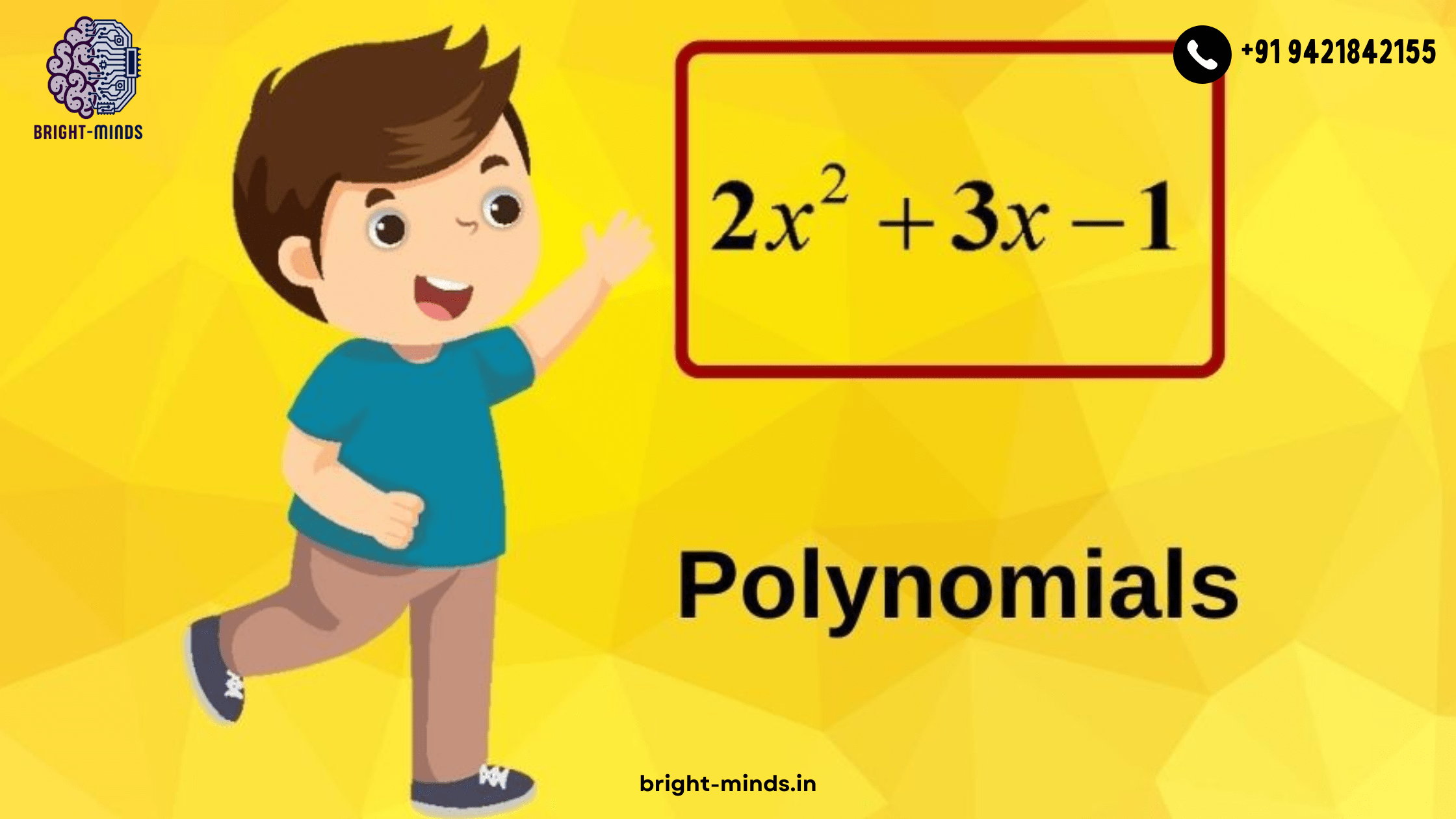Understanding how patterns function makes mathematics fascinating, and one of the most crucial algebraic building blocks is polynomials. Learning polynomials will increase your confidence, whether of whether you are in Class 9 or getting ready for competitive exams.
Let’s divide it up into manageable chunks.
What is a Polynomial?
An algebraic statement made up of variables, constants, and exponents joined by addition, subtraction, or multiplication is called a polynomial.
Example:3x² + 2x - 5 is a polynomial.
x= variable3, 2, -5= constants or coefficients²= exponent
✔️ No variable should have a negative or fractional exponent in a polynomial.
Terms in a Polynomial
Each part of a polynomial separated by + or – is called a term.
Example:
In 4x³ + 3x - 7, there are 3 terms:
4x³3x-7
Types of Polynomials
Polynomials can be classified based on:
➤ Number of Terms:
- Monomial – 1 term (e.g.,
3x) - Binomial – 2 terms (e.g.,
x + 5) - Trinomial – 3 terms (e.g.,
x² + 3x + 2) - Polynomial – more than 1 term (general case)
➤ Degree of Polynomial:
The highest power of the variable is the degree.
| Polynomial | Degree | Type |
|---|---|---|
5 | 0 | Constant |
2x + 1 | 1 | Linear |
x² + 4x + 4 | 2 | Quadratic |
x³ - 2x² + x | 3 | Cubic |
Standard Form of a Polynomial
Always write a polynomial in descending order of the powers of x.
Example:x² + 3x + 2 is in standard form.
But 3x + 2 + x² is not.
Addition & Subtraction of Polynomials
Combine like terms (same variable and same power):
Addition Example:(2x + 3) + (x + 4) = 3x + 7
Subtraction Example:(5x² - 3x + 2) - (x² + x - 1) = 4x² - 4x + 3
Multiplication of Polynomials
Use the distributive property or FOIL method (for binomials).
Example:(x + 2)(x + 3) = x² + 5x + 6
Factorisation of Polynomials
Factorisation means writing a polynomial as a product of its factors.
Example:x² + 5x + 6 = (x + 2)(x + 3)
You can use:
- Common factors
- Middle-term splitting
- Identities
Algebraic Identities to Remember
These are very useful in expanding or factorising polynomials:
- (a + b)² = a² + 2ab + b²
- (a – b)² = a² – 2ab + b²
- (a + b)(a – b) = a² – b²
Use these to solve faster in exams!
Real-Life Connection
Polynomials are used in:
- Physics (equations of motion)
- Economics (study of profit and loss)
- Engineering (pathways and curves)
- Animation routes in computer graphics)
Final Tips to Master Polynomials
- Always simplify before solving.
- Watch out for negative signs.
- Practice factorisation daily.
- Memorize identities—they save time!
Conclusion
With practice, polynomials will become your favorite math topic, even though they may initially appear difficult! Understanding polynomials is essential for success in algebra and beyond, whether you’re factorizing expressions or solving equations.
📌 You will quickly become an expert in polynomials if you continue to practice!
You may be interested in this

